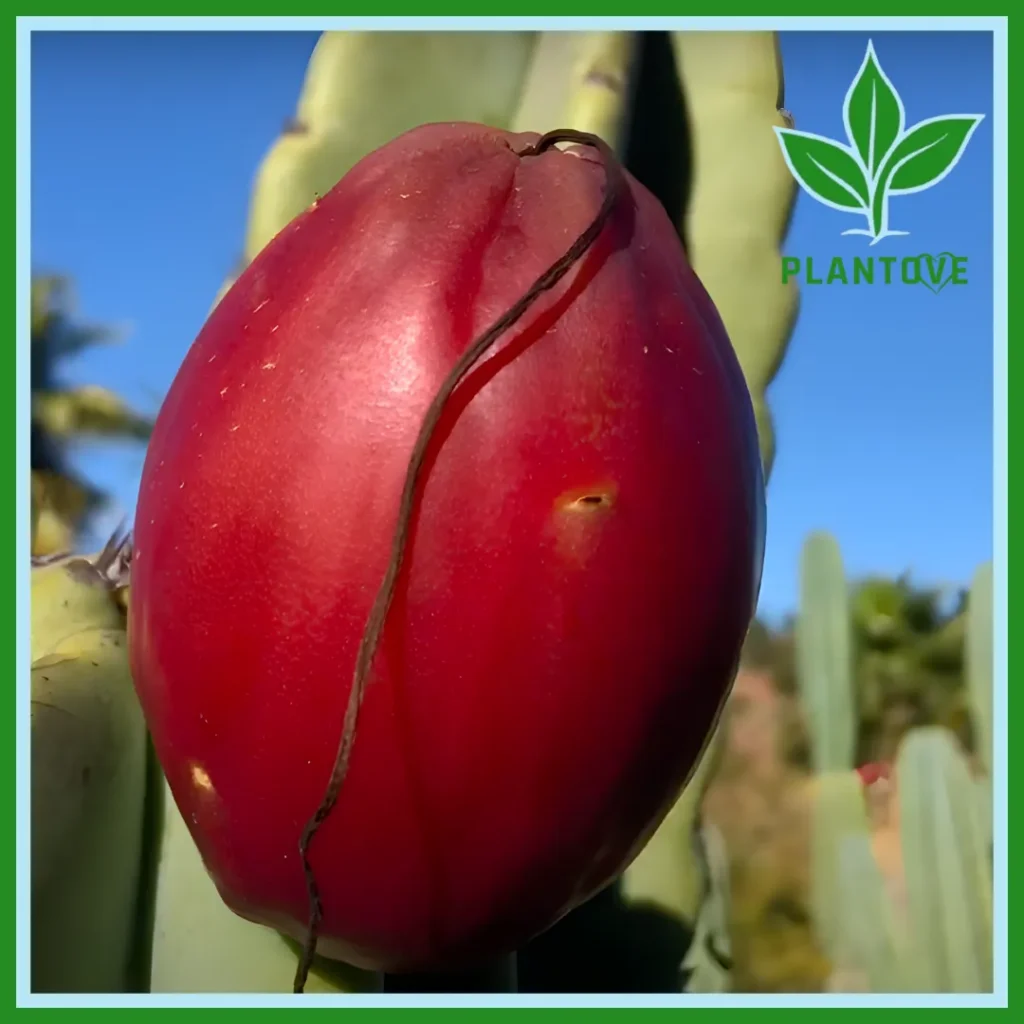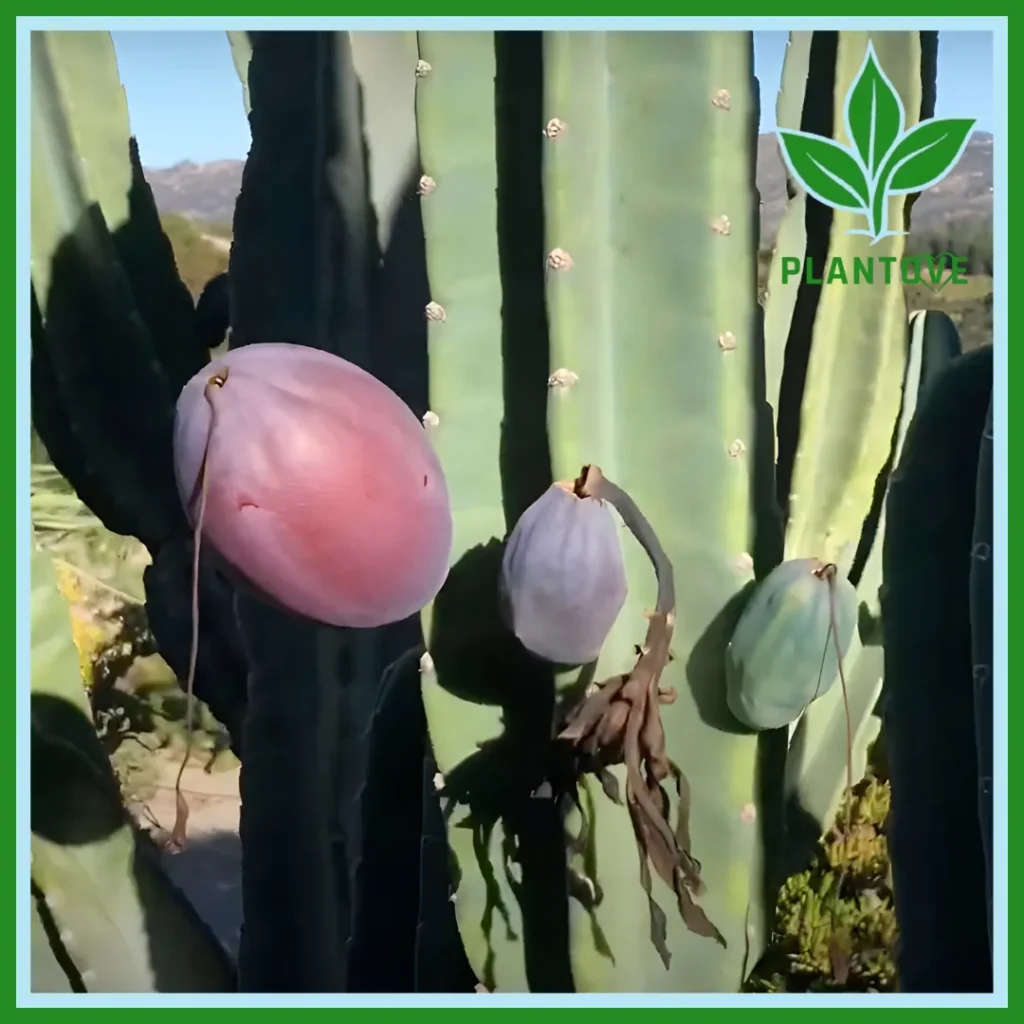The Peruvian apple cactus (Cereus repandus) is a fascinating plant native to South America. Loved for its tall, columnar stems and stunning nighttime blooms, this cactus is a favorite among gardeners and plant enthusiasts. Beyond its beauty, the plant produces a delicious fruit, making it both ornamental and practical. Whether you’re a seasoned plant lover or a beginner, learning about the Peruvian apple cactus, its fruit, propagation methods, and care can help you enjoy this unique plant in your garden or home.
What Is the Peruvian Apple Cactus?
The Peruvian apple cactus is a fast-growing, columnar cactus that can reach heights of up to 30 feet in its natural habitat. Its ribbed, spiny stems are striking, making it a standout plant in any collection. While it thrives in arid climates, it adapts well to indoor environments if given enough light and proper care.
What makes this cactus even more remarkable is its nocturnal flowers. Large and fragrant, the white blooms open at night, attracting pollinators like bats and moths. These blooms are short-lived but breathtaking, adding to the plant’s allure.
Peruvian Apple Cactus Fruit: A Sweet and Nutritious Treat

One of the most exciting aspects of this cactus is its edible fruit, often called “Peruvian apple” or “pitaya.” The fruit has a vibrant red or yellow outer skin and a soft, white pulp filled with tiny black seeds.
Taste and Nutrition
The fruit is mildly sweet, with a flavor similar to a mix of kiwi and pear. It’s not only delicious but also packed with nutrients. Some of the health benefits include:
- Vitamin C: Boosts the immune system.
- Dietary Fiber: Supports healthy digestion.
- Antioxidants: Protect the body from harmful free radicals.
You can enjoy the fruit fresh or use it in smoothies, salads, and desserts. Its refreshing taste makes it a favorite among those who grow this cactus.
How to Harvest
To harvest the fruit, wait until the skin becomes bright and vibrant, indicating ripeness. Use gloves to protect your hands from the cactus’s spines. Gently twist the fruit or cut it off with a knife. Once harvested, you can refrigerate it to keep it fresh.
Peruvian apple cactus propagation

If you’re looking to grow your own Peruvian apple cactus, you’re in luck! This plant is easy to propagate using either seeds or cuttings.
Propagating from Seeds
- Collect Seeds: Scoop out seeds from a ripe fruit and rinse them to remove the pulp.
- Prepare Soil: Use a well-draining soil mix, such as a combination of sand and potting soil.
- Plant the Seeds: Sprinkle the seeds over the soil surface and lightly cover them with a thin layer of sand.
- Water and Wait: Mist the soil gently and place it in a sunny spot. Keep the soil moist but not soggy. Germination typically occurs within two to six weeks.
Propagating from Cuttings
- Choose a Healthy Stem: Select a mature stem and cut a segment about 6–12 inches long.
- Let It Dry: Allow the cutting to dry for a few days until the cut end forms a callus. This helps prevent rot when planted.
- Plant the Cutting: Insert the callused end into well-draining soil.
- Water Sparingly: Water only when the soil is completely dry. Over time, roots will form, and the cutting will begin to grow.
Propagation by cuttings is faster and more reliable than starting from seeds, making it the preferred method for many gardeners.
Peruvian Apple Cactus Care

Caring for a Peruvian apple cactus is simple, as it is a hardy and low-maintenance plant. Here’s what you need to know:
Light Requirements
The Peruvian apple cactus thrives in bright, direct sunlight. Outdoors, it needs at least six to eight hours of sunlight daily. Indoors, place it near a south-facing window or provide supplemental light if necessary.
Watering
Like most cacti, the Peruvian apple cactus prefers infrequent watering. Allow the soil to dry out completely between waterings. During the growing season (spring and summer), water moderately. Reduce watering in fall and winter when the plant enters dormancy. Overwatering is a common mistake, so be cautious to avoid root rot.
Soil and Potting
This cactus needs well-draining soil. A mix designed for cacti and succulents works best. If planting in a pot, choose one with drainage holes to prevent water from accumulating.
Temperature and Humidity
The Peruvian apple cactus thrives in warm temperatures ranging from 60°F to 85°F. It can tolerate brief periods of cooler weather but should be protected from frost. If you live in a colder climate, grow the cactus in a container so you can bring it indoors during winter.
Fertilizing
Feed the plant with a balanced cactus fertilizer during its active growing season. Fertilize every four to six weeks in spring and summer, but stop feeding in the fall and winter.
Common Problems and How to Fix Them
Although the Peruvian apple cactus is hardy, it can encounter a few issues:
- Overwatering: Yellowing stems often indicate overwatering. Allow the soil to dry completely before watering again.
- Pests: Spider mites and scale insects may infest the plant. Treat these pests with insecticidal soap or neem oil.
- Slow Growth: Insufficient light or poor soil can slow growth. Ensure the plant receives adequate sunlight and nutrients.
Why Grow a Peruvian Apple Cactus?
The Peruvian apple cactus is not just a plant, it’s an experience. Its tall, spiny stems and fragrant flowers make it a striking centerpiece in any garden. The edible fruit is an added bonus, offering a unique taste and numerous health benefits. Additionally, its ease of propagation and minimal care requirements make it an excellent choice for beginners and experienced gardeners alike.
Whether you’re drawn to its aesthetic appeal, delicious fruit, or adaptability, the Peruvian apple cactus is a rewarding plant to grow. With proper care and attention, it will thrive and become a source of pride in your collection for years to come.

